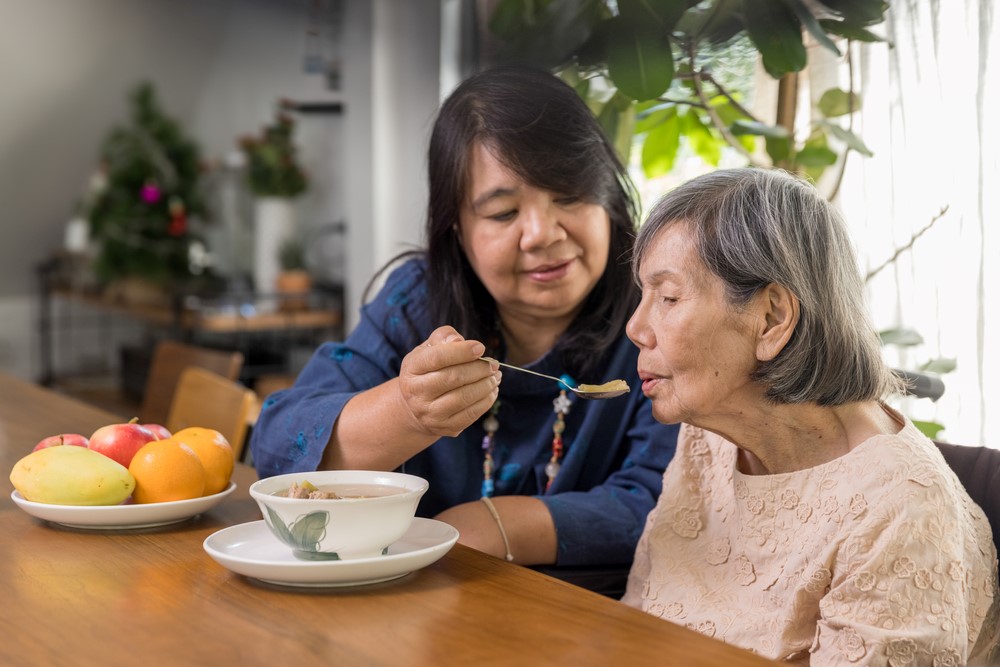
Deciding to have a live-in caregiver can be difficult. You are giving up a lot of your independence and inviting someone into your home to help take care of you.
However, there are many reasons for having a live-in caregiver that needs to be considered before making a final decision. For example, one of the main benefits of having a live-in caregiver is that they can help with tasks that will make your standard of living safer and healthier.
For example, if you are elderly and have difficulty getting around, a live-in caregiver can help with cooking, cleaning, and laundry. Caregivers can also help with bathing, dressing, and grooming. Having someone there to help with these tasks can free up your time to focus on other things.
This in-depth article will discuss the benefits of having a live-in caregiver and why they may be the best option for you or your loved one.
What Exactly is a Live-In Caregiver?
A live-in caregiver comes to live with you in your home and provides care for you on a full-time basis. A live-in caregiver will help with tasks that you can no longer do yourself or are too difficult to do on your own.
Live-in caregivers are often family members, but they can also be someone that you hire independently, perhaps from an agency.
What Responsibilities Does a Live-In Caregiver Have?
A live-in caregiver is responsible for providing care, assistance, and companionship. In addition, they can help with activities of daily living such as bathing, dressing, eating, and using the restroom.
They will also help with light housekeeping tasks such as laundry, grocery shopping, and meal preparation. In addition to these responsibilities, a live-in caregiver will provide companionship and emotional support.
Some of the benefits of having a live-in caregiver include:
- Having someone there 24/7 to provide care and assistance
- Having someone to help with things like cleaning, cooking, and laundry
- Having someone to help with bathing, dressing, and toileting
- Having someone to provide transportation to doctor’s appointments and other activities
- Having someone to provide companionship
When is the Right Time to Consider a Live-In Caregiver?

Many families wait until a health scare or an injury to decide. But unfortunately, they don’t realize that they can avoid these issues by having a live-in caregiver.
Another sign that you or a loved one need a live-in caregiver is when daily activities become too difficult to manage, even when using the right mobility aids.
If the family member cannot perform activities of daily living such as bathing, eating, or dressing, a live-in caregiver can help with all these activities and so much more.
Benefits of Having a Live-In Caregiver
Provides Peace of Mind
Having a caregiver in the home provides companionship, but they also can act as an extra set of eyes and ears.
They can identify any changes in mood or physical appearance and report this back to the family.
This level of care often allows other family members peace of mind that their loved one is being well taken care of and can live independently at home.
In-house Caregivers Make Daily Life Easier.
Daily life for both patients and their families becomes easier with a live-in caregiver. Here are some of the top reasons life becomes more manageable when having an in-house caregiver:
- Convenience: Rather than making multiple trips to and from home, a live-in caregiver can provide around-the-clock care. This is especially beneficial for those who need constant supervision or assistance.
- Staying Mobile: As we age, it becomes harder and harder to get around. A live-in caregiver can help with keeping you active. Caregivers can also help push mobility aids like manual wheelchairs when you go out or assist with walkers or other devices in the home.
- Safety: Having someone else in the house can help make it safer, especially if the patient is prone to falls or other accidents. A caregiver can also monitor things like gas stove usage and make sure medications are taken as prescribed.
- Company: It can be lonely being home all day, especially for those who want to be socially active. A live-in caregiver can provide much-needed companionship and conversation.
- Independence: For many people, moving to a nursing home is unthinkable. A live-in caregiver can help patients maintain their independence by staying in their own homes.
- Costs: While hiring a live-in caregiver may seem costly, it is often cheaper than other options, such as assisted living facilities or nursing homes.
They Promote Independent Living
Aging in place and staying independent is one of the primary benefits of having a live-in caregiver.
If you find it challenging to keep up with activities of daily living or are starting to experience memory problems, a live-in caregiver can help.
A person’s home is one of the most important places they can be, but as we age, it may be difficult to stay alone; that is where a live-in caregiver comes in to help.
You’ve Decided on a Live-In Caregiver; Now it’s Time for a Checklist

Before hiring anyone to come into your home and provide care for you or a loved one, you should do your research. Here is a checklist of important aspects to consider before making a hire:
- What type of care is needed?
- What are the budget constraints?
- What are the geographical limitations?
- What are the preferred work hours?
- What are the caregiver’s qualifications?
- Check references
- Run a background check on your own
After considering all of these factors, you’ll be in a much better position to decide whether to hire a live-in caregiver. The information will also help you to find the best caregiver for your situation. With the right person, having a live-in caregiver far outweighs the costs.
Live-In Care Versus Assisted Living Facilities
The cost of living in an assisted living facility can be extreme. The average cost of assisted living is about $4,500 a month. That does not include extra medications, activities, and other needed services.
A live-in caregiver can provide all those services for a fraction of the cost.
However, it’s important to carefully dig into the numbers for your own situation, as maintaining a home comes with costs as well. The costs of a caregiver may also vary depending on the tasks that you need them to complete and other factors.
So, you will have to do your due diligence to see what the best solution is for your family.
The Costs of Having a Live-In Caregiver
Some people might worry about having someone live in their home, but there are many affordable options for live-in caregivers. With that said, it’s challenging to estimate what it might cost for a live-in caregiver.
The average cost may fall between $1,000 and $5,000 per month. The main reason for significant pricing differences is where the live-in caregiver is located.
It’s more expensive to hire a live-in caregiver in large metropolitan areas. Additionally, the type of care required will also play into how much it costs. For example, a live-in caregiver who provides around-the-clock care will be more expensive than someone who only comes during the day.
How to Pay for a Live-In Caregiver
Medicare
If you’re wondering if Medicare will cover the cost of a live-in caregiver, the answer is most likely no. There are times that Medicare will cover the cost of home health care visits, but these visits must be medical.
Medicaid
This will depend on what state you reside in, as laws and procedures are different. Because of this, there is typically a lot of confusion on if Medicaid will pay for at-home care.
The good news is that many states will provide assistance that can be used to hire an in-home caregiver.
The first step is to contact your state’s Medicaid office and ask about the Home and Community Based Services Waiver program.
Veterans Assistance
If you or your spouse are veterans, you may be eligible for the Veterans Aid and Attendance program.
However, the VA does not have any live-in caregiver program. We encourage you to read more about their program here.
Long-Term Care Insurance
Another way to offset the cost of a live-in caregiver is to have long-term care insurance. This type of insurance policy will help cover the cost of chronic care, which can include in-home care services.
Hiring a live-in caregiver is a big decision, but it has benefits. You or your loved one can age in place and maintain independence with the right person.
Making Your Home Ready for a Live-In Caregiver
The first step is to have an initial consultation with the agency. After you’ve signed up with the agency, they will send a social worker to your home to do an assessment.
The social worker will talk to you about the needs and care you’re looking for. They will also look at your home to ensure that it’s safe and comfortable for a live-in caregiver.
Once you’ve found the right live-in caregiver, there are some things you need to do to get your home ready for them.
First, you’ll need to create a private space to sleep and store your belongings.
You’ll also need to make sure there’s enough food in the house for both of you and that the kitchen is stocked with the supplies they’ll need to cook meals.
Finally, you should sit down with your caregiver and create a schedule of tasks and responsibilities. This will help ensure that you know what’s expected of each other.
Final Thoughts
A live-in caregiver can be a great addition to your household. They can provide companionship, help with tasks around the house, and give you peace of mind knowing that someone is there to help.
Before hiring a live-in caregiver, do your research and choose someone you feel comfortable with, so the chances of the live-in caregiver working become much higher.
Once you’ve found the right person do your due diligence to ensure they have all the proper paperwork and references.
Sit down with your caregiver and create a schedule of tasks and responsibilities to know what’s expected.
Having a live-in caregiver can be a positive experience for everyone involved with the proper preparation.
This post includes sponsored links.
Feeling Overwhelmed?
Check out our Caregiving Consulting service for personalized support and guidance.


Leave a Reply